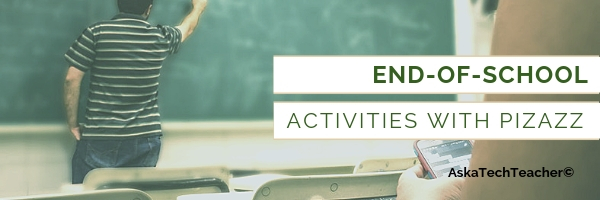Education has changed. Teachers no longer lecture from a dais with student learning contained within the schoolhouse walls. Thanks to the pervasiveness of easy-to-use and free  web-based tools, 93 percent of teachers have one or more computers in the classroom with internet access (National Center for Education Statistics–2009). Global home Internet users with fixed Internet access is expected to grow from 1.7 billion in 2011 to 2.3 billion by 2016 (VNI-SA Research)—that’s almost one-third of the world’s population.
web-based tools, 93 percent of teachers have one or more computers in the classroom with internet access (National Center for Education Statistics–2009). Global home Internet users with fixed Internet access is expected to grow from 1.7 billion in 2011 to 2.3 billion by 2016 (VNI-SA Research)—that’s almost one-third of the world’s population.
Because of these changes, educators have come to expect students to participate actively in the learning process and transfer their knowledge from the classroom to life. For example, when preparing a class project, a fifth grader will do the research using the internet, collaborate with classmates on Google Apps, write the report with a web-based tool (i.e., Google Drive), share it with the world using digital tools (i.e., Animoto or Glogster), and then use those learned skills in other classes.
Students have become digital citizens. The question is: How do we as educators teach them to thrive in the digital world?
Understand ‘Digital Citizenship’
Current best practices say don’t hide students from the digital world. They already visit web-based edutainment sites as early as preschool, use ‘Instagram’ and multi-player XBox games in elementary school, and have made text messaging and Facebook their communication of choice by Middle School. When my 7th graders sold me on the educational value of Minecraft (an online simulation that teaches geology, minerals, problem solving) at recess, I polled 4th graders to see who used it. One in four did! When I allowed these youngers to play it during Monday lunch, my twenty-four stations were full where usually I get about ten students.
But before we open the floodgates to the fascinating world that is the internet, students must understand what it means to thrive as a citizen of that community. I start kindergartners the first month of school, before I let them visit mesmerizing educational sites like Starfall and Bembo’s Zoo by explaining that thriving in the digital neighborhood requires exactly what they know about staying safe in their home town:
Don’t talk to bad guys, look both ways before crossing the (virtual) street, don’t go places you know nothing about, play fair, pick carefully who you trust, don’t get distracted by bling, be aware of their surroundings, and sometimes stop everything for a nap.
As students get older, they learn netiquette, not to plagiarize the work of others, how to recognize scams, not to be a cyber-bully, and strategies for avoiding virtual ‘bad guys’ as well as the concept of a ‘digital footprint’. This is an individual’s online reputation. Children, as new digital citizens, think they can say/do anything anonymously and with impunity. They don’t realize that every step they take across the internet landscape is tracked and never forgotten. Comments made in high school, pictures posted in college, funny videos taken out of context—all are available for future employers to view.
Why does it matter?
Looking up data in an encyclopedia, using themed books in the classroom library, listening to content distilled by the teacher has always worked. American industry thrives on workers educated in just this manner.
So why change?
Because the world changed. Teachers who continue to grasp at what always worked in the past are a dying breed, passed up by not only colleagues but their students who learn to use new literacies. Those who embrace it find the opportunity to differentiate instruction. No longer do we need to teach to the middle student in the class—or, disastrously, to the slowest. Now, a framework for the unit can be established by the teacher, digital resources shared, and students can work to their level with assessment based on authentic achievements rather than a subjective line in the pedagogical sand that defines ‘grade-level expectations’. Proof of learning is the transfer of knowledge to other classes, other problems, family needs.
Requiring students to be risk-takers in their learning, inquiry-driven in their results, and authentic in their achievements is the new paradigm in educational success. All of these factors can be summed up in one strategy: Learn to thrive as a digital citizen. The best news is, it’s sustainable. The skills used in yesterday’s physical world transfer to today’s digital world.
Play fair. Don’t talk to strangers. Be aware of your surroundings. Sometimes take a nap to regenerate.
For more, click K-8 Digital Citizenship Curriculum. 70 pages with how to teach everything, including over 40 projects.
Jacqui Murray has been teaching K-18 technology for 30 years. She is the editor/author of over a hundred tech ed resources including a K-12 technology curriculum, K-8 keyboard curriculum, K-8 Digital Citizenship curriculum. She is an adjunct professor in tech ed, Master Teacher, webmaster for four blogs, an Amazon Vine Voice, CSTA presentation reviewer, freelance journalist on tech ed topics, contributor to NEA Today, and author of the tech thrillers, To Hunt a Sub and Twenty-four Days. You can find her resources at Structured Learning.





































Dear Jacqui,
I mentioned in class the other evening a friend of mine whose spouse teaches at a prestigious private school in Boston – the old-fashioned way…pen and paper…little integrated technology. She noted the tuition the students pay and questioned why would parents sacrifice so much if they thought their children were not getting a top notch education? And the students at this school do go on to the best universities and colleges.
How to explain other than to say the world has changed!
I asked the other night about the possibility of a federal mandate (think NCLB) as it seems it will be necessary to fund and get all schools up to certain tech standards. It’s becoming clear to me just how wide this gap is growing in our schools!
Sincerely,
Susan
There are schools that teach traditional schooling–no tech. there’s a small chain over here in California. To believe in this must presume that parents don’t give their children iPads and iPhones as babysitting or entertainment, because if kids are using digital devices at home, they will feel cheated if they don’t use them at school. There’ll be an unnecessary wall making school ‘no fun’ when what we really want kids to absorb is that learning happens everywhere, it’s fun. Assuming that no-digital-at-home is the case, I’m fine with that.
But I do disagree with it. It’s like insisting we walk rather than drive. Sure, walking is healthier, but that’s only part of the picture. What does this parent think kids are sacrificing? Why is technology not a ‘top notch education’?
I stumbled on this sort of a conversation during a radio interview I headlined about keyboarding. I think their intention was to blindside me, but it didn’t quite work that way.